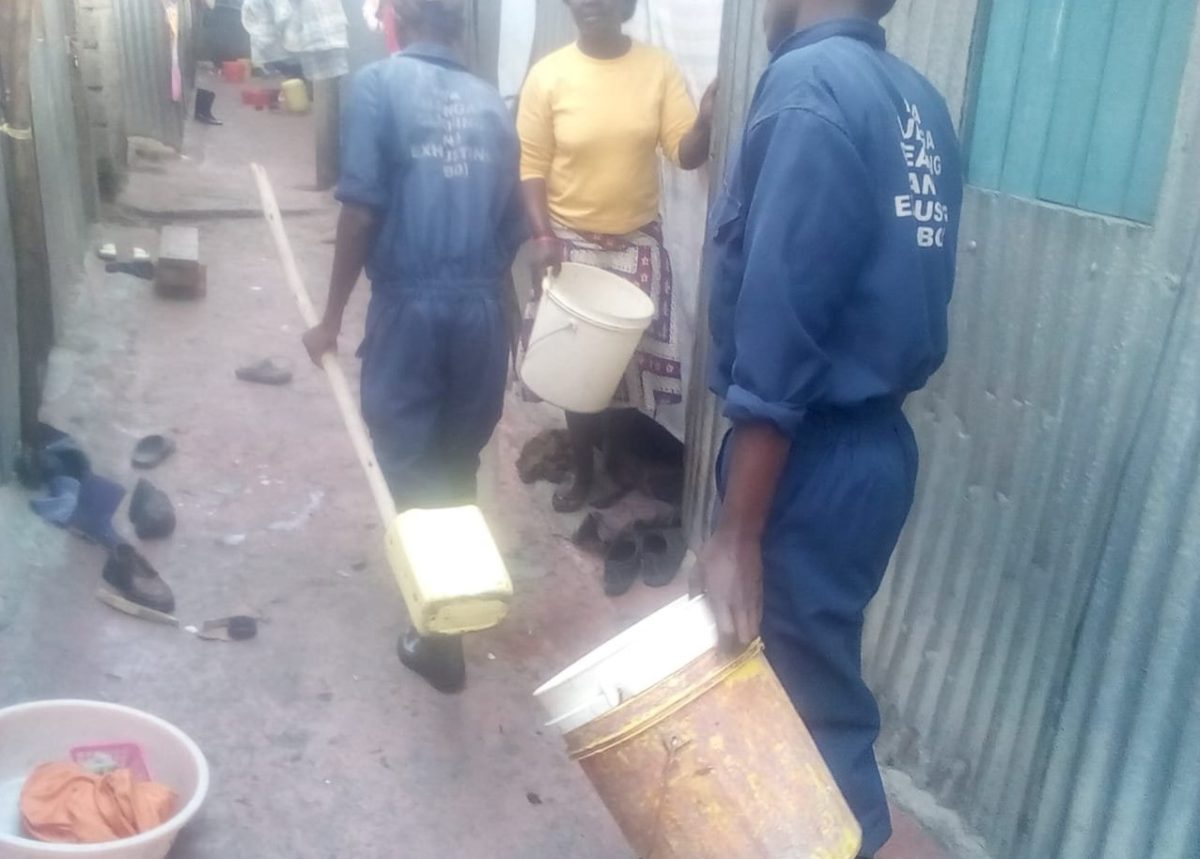When we think of sanitation, more often than not, we do not think of the sanitation workers. We do not think of their health as they suffer through terrible working conditions. The health of informal workers is a burden unless occupational health is prioritized. Sanitation workers are an asset in community sanitation, hygiene and in general health, yet their occupational health is often ignored by many. Due to their nature of work, they are exposed to numerous diseases as well as hazardous gases, chemicals, cuts, abrasions, and other injuries. So what are we doing about it?
Low-grade laborers, such as manual pit emptiers, are often among the most marginalized in society. Their work is associated with a variety of physical, chemical, and biological hazards. The laborers in urban slums are at a higher risk of fatal occupational injuries than those in the general workforce. The common non-fatal injuries are mainly musculoskeletal. Other common injuries are fractures, trauma, bites, and diseases include skin and gastrointestinal disorders. Furthermore, the workers are exposed to a variety of concerning substances, such as heavy metals, respirable quartz dust, dioxins, furans, and mutagens.
With a vision of ensuring available and sustainable management of sanitation, African leaders issued the ‘Ngor Declaration on Sanitation and Hygiene’ at the 4th African Sanitation and Hygiene Conference, 2015 which aims to achieve universal access to adequate and sustainable sanitation, safe hygiene services and the elimination of open defecation by 2030. Within the declaration, there exists funding strategies for bridging the sanitation and hygiene human resource capacity gap at all levels. The gap can be filled if awareness programs were in place for workers so information is imparted regarding safer work procedures and the use of protective clothing. The use of protective clothing is based on occupational safety and health act (OSHA) of 2010 Part 2 chap 12 (1) which states that: every self-employed person shall take all necessary precautions to ensure their own safety and health and that of any other person in his workplace; at all times use appropriate safe systems, preventive and control measures and where not feasible, use suitable measures.
In Nairobi’s informal settlements, due to congestion and inadequate government resources for sanitation, there are self-employed pit emptiers. Recruitment of the emptiers is based on individual interest. Upon expressing interest, individuals are assigned tasks that are then used as a performance measure, if they succeed they join a working group. While there is a collective effort among urban dwellers to find ways of making ends meet through sanitation work, the big question is whether the emptiers have knowledge of health risks associated with fecal waste management work? And what effects it has on their health?
Through multiple interactions with emptiers in Nairobi’s urban slums, we realized that they are knowledgeable on health hazards, as they spoke on a multitude of effects associated to a lack of protective clothing in their work including skin diseases, cuts, pricks, electrocution, stomachache, headaches, deaths, chest problems, cholera, diarrhea, gas effects, and respiratory infections.
Worthy to note is that their ability to translate this knowledge into practice was still wanting since many pit emptiers did not use protective clothing. The majority of workers who interacted with APHRC lacked protective clothing, whilst a few had an incomplete set of protective clothing, a situation which was confirmed by community members and leaders.

Improving the occupational safety of pit emptiers is a crucial step to enhance the social welfare of the low-grade laborers. This can be done in an efficient manner by firstly, identifying the actual occupational risks associated with fecal waste management activities. This is vital in the quest to apply control measures. This entails eliminating the hazard at its source, for example, substituting hazardous chemicals or omitting burdensome work steps and hence rendering additional work steps unnecessary and it is the most efficient precaution.
Technical measures are also vital and these involve safer equipment and are more preferable to individual measures such as personal protective equipment and training in proper behavior. These do not eliminate the hazard per se, but only provide a barrier between the hazard and the worker at the ultimate point. This is the STOPP principle:
S: substitution of hazardous process or material.
T: technical measures.
O: organizational measures.
P: personal protective equipment.
P: personal behavior.
Policymakers and key stakeholders should look into the needs of pit emptiers and other workers in sanitation and hygiene. Furthermore, capacity building, sensitization, and empowerment of the emptiers should be taken as vital in the promotion of health literacy and more so occupation health of emptiers which in turn enhances quality sanitation and hygiene in the urban sector.
Authors: Ivy Chumo & Siki Kigongo